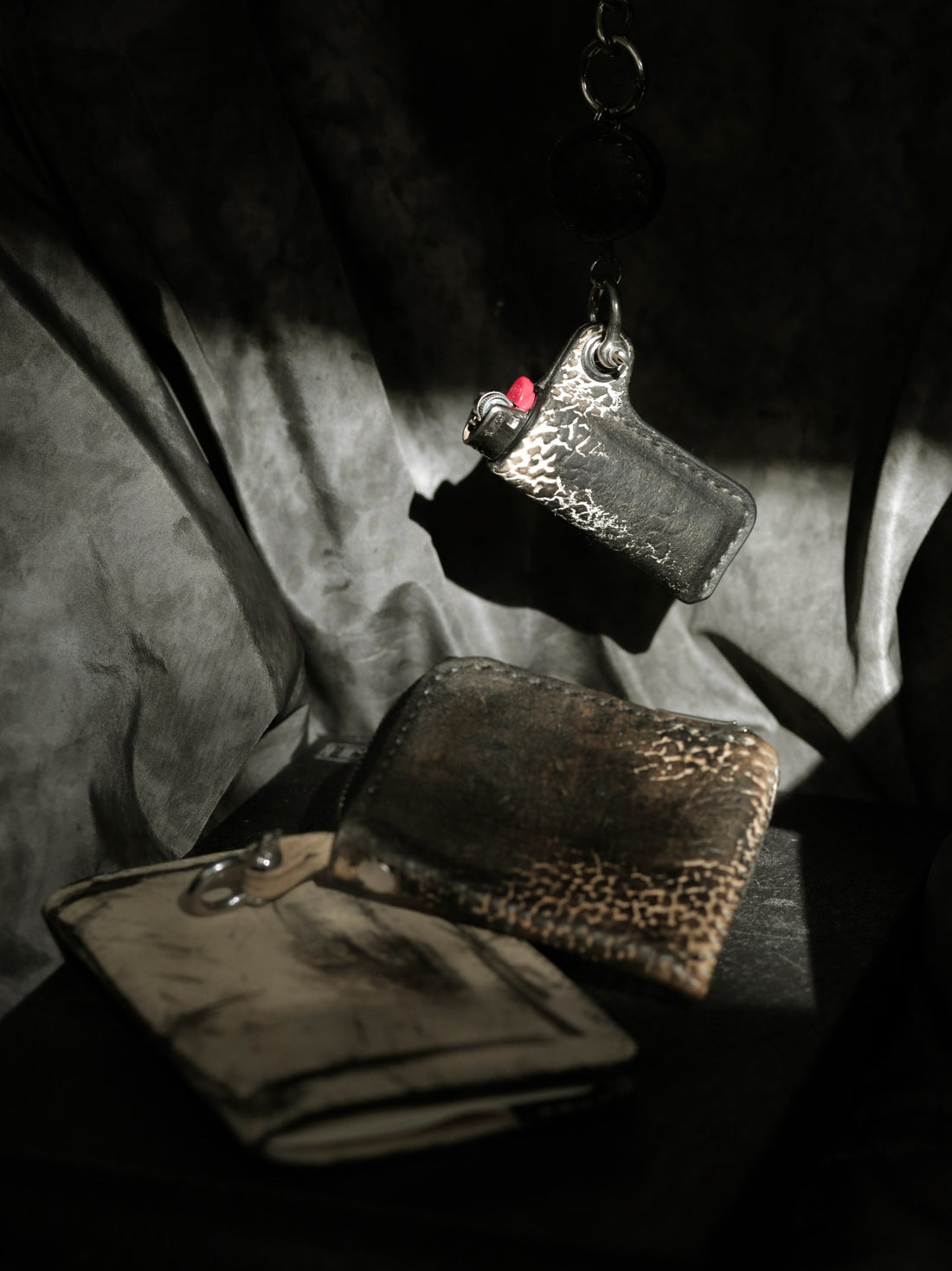
Object-stained coating (toko-grunge)
It starts with dirty white culatta
One of the most particular leathers I'm working with is Dirty White Horse Culatta.
For vegetable-tanned leather, it's virtually impossible to be dyed white without a heavy coat of paint. So this particular leather is using a different old tanning process called aldehyde tanning. This is still different from chrome-tanned leather, so it doesn't have that blue-tinted chromium salts core.
This results in a horse leather that has a quite dry hand feel and some light stains from the tanning vat. It's also similar to vegetable-tanned leathers in the way it burnishes and develops patina. It even tans further under the UV light and gets a creamy yellow tint.
I love this leather, but it can be a bit too much in how it attracts dirt and tans under the sun.
Edge burnishing, polishing, and gumming
Leather edges and the flesh side of leather are usually burnished and polished for protection and a smooth texture. It can be done just with pressure and temperature, but some additional gum and wax are also used.
One of the most popular burnishing agents is made in Japan and called Tokonole. It's a very light cream with a bit of gum in its secret recipe. It's a beloved standard treatment in traditional leathercraft.
So one day I was using this burnishing agent mixed with a black paint...
Happy accidents and stained leather
The first stained object happened by accident, when I was finishing a Field Notes notebook cover for myself. And the way it complemented the texture was the a-ha moment.

I took a couple of other items I've made from the same leather. Some of them were deemed too avant-garde in their derelict look. But with the additional staining and polishing, they now look exactly as they were always meant to be.


Coated and polished
Now that it was coated and polished, what does it feel like?
I think the best comparison would be with waxed jeans. This burnishing agent has just enough gum and waxes to create a protective layer on top of the leather, but it feels like a part of the material, unlike the plastic and acrylic pigment paint.
It is also polished with wood, bone, and glass slickers to develop a shinier surface and for the stain to be embedded deeper into the fibers.
Beware of getting it wet, though. The same as any aniline-dyed vegetable-tanned leather, it can stain your clothes and skin when wet. It easily washes out, but better to keep your leather items dry.
Over time, it may change, rub off a bit, and change depending on how you use your leather objects. And you can reapply and polish it even yourself with a bit of guidance. I'm always happy to assist, and you get a lifetime support with my 10-year warranty.


